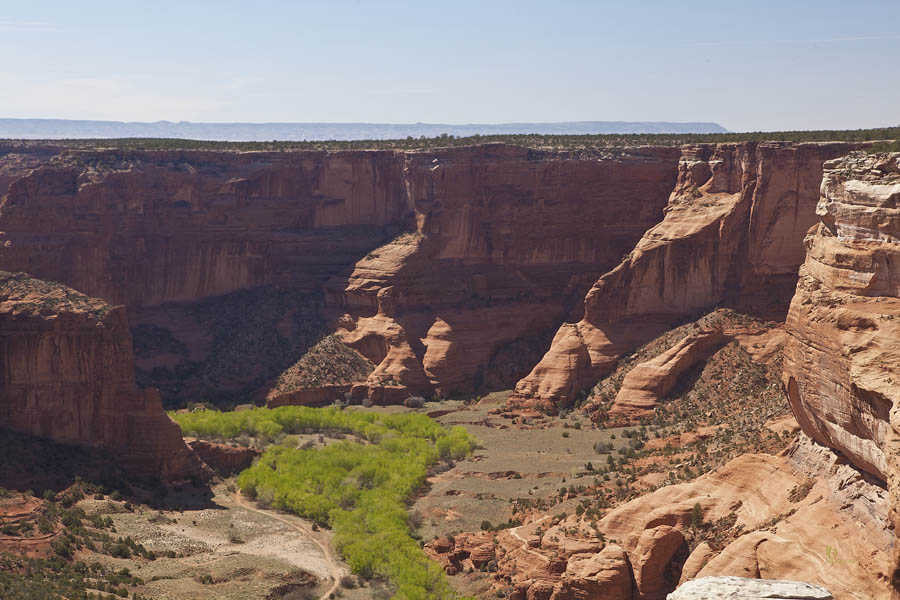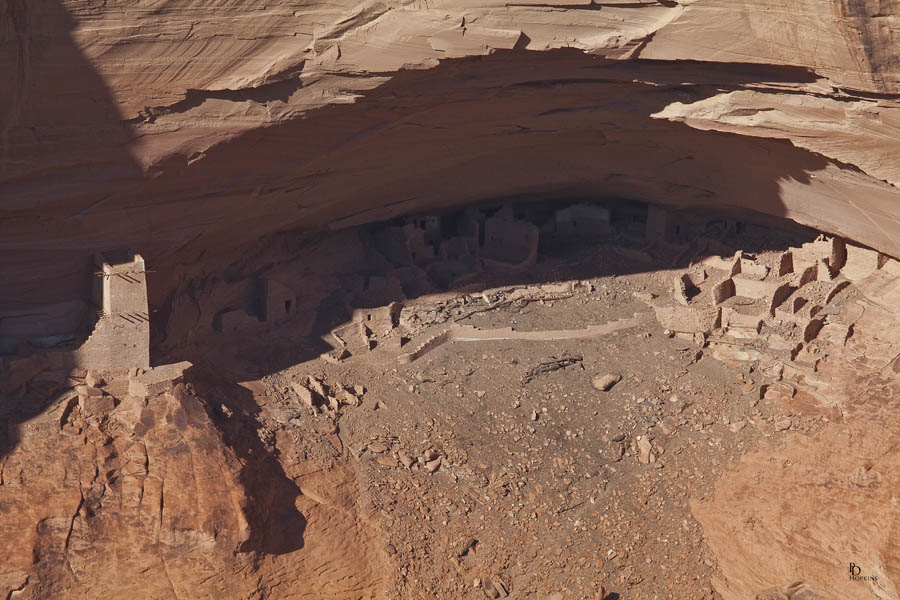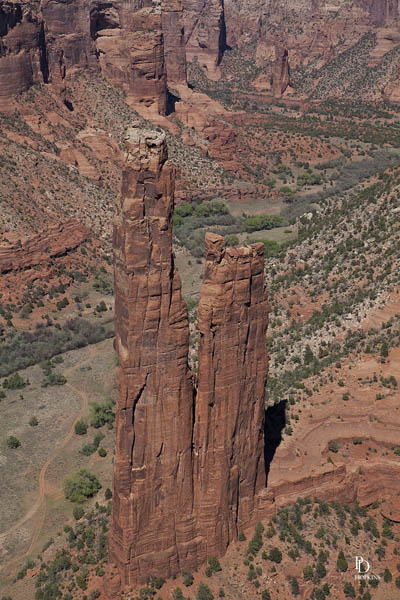The principal destination for the first day of our photo journey was the Canyon de Chelly National Monument, located in northeastern Arizona not far from the New Mexico Border. This comparatively little-known canyon is not as spectacular as others in Arizona or Utah but it does have sheer sandstone walls rising up to 1,000 feet, several scenic overlooks, many well-preserved Anasazi ruins and an insight into the present day life of the Navajo, who still inhabit and cultivate the valley floor.

Millions of years of land uplifts and stream cutting created the colorful sheer cliff walls of Canyon de Chelly. Natural water sources and rich soil provided a variety of resources, including plants and animals that have sustained families for thousands of years. The Ancient Puebloans found the canyons an ideal place to plant crops and raise families. The first settlers built pit houses that were then replaced with more sophisticated homes as more families migrated to the area. More homes were built in alcoves to take advantage of the sunlight and natural protection. People thrived until the mid-1300’s when the Puebloans left the canyons to seek better farmlands.
Descendants of the Puebloans, the Hopi migrated into the canyons to plant fields of corn and orchards of peaches. Related to the Athabaskan people of Northern Canada and Alaska, the Navajo also settled the area. The Navajo, or Dine’ as they call themselves, continue to raise families and plant crops just as the “Ancient Ones” had. The farms, livestock and hogans of the Dine’ are visible from the canyon rims.
My first photo of the canyon was taken from a scenic outlook on the south rim and provides a good sense of its scale.

I was able to get the following photo of the Mummy Cave Ruin from the north rim of the canyon using a telephoto lens. Mummy Cave, located deep within Canyon del Muerto, contains a number of ancient structures that were built at various times in history. It is likely the last pueblo the Anasazi occupied before abandoning the Canyon de Chelly region around 1300 A.D.. The caves take their name from two mummified bodies, found still wrapped in yucca plant fiber, by an archeological expedition in 1882.

My favourite sight at Canyon de Chelly was Spider Rock. It’s the park’s distinctive geologic feature, a sandstone spire that rises 800 feet (240 m) from the canyon floor at the junction of Canyon de Chelly and Monument Canyon.

My next post will feature our first stop on the second day of our trip, Monument Valley which straddles the border of Arizona and Utah. You can locate it on the map above, to the north and west of Canyon de Chelly.

Well done!